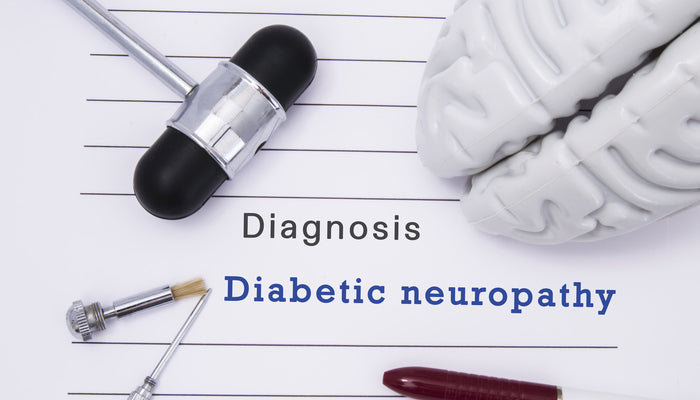For many living with diabetes and using glucose meters, the haunting specter of potential complications looms large. Among the various concerns, diabetic neuropathy emerges as a prominent and often distressing issue. Characterized by nerve damage due to high blood sugar, this condition can lead to pain and numbness in various parts of the body. The burning question on many minds is: can diabetic neuropathy be reversed? While the answer is multi-faceted, it's crucial to understand the condition's nuances before drawing conclusions.
Understanding Diabetic Neuropathy
Diabetic neuropathy stands as a daunting manifestation of prolonged uncontrolled diabetes. It’s not just a single condition but represents a family of nerve disorders caused by diabetes. With the human body housing an intricate network of nerves, responsible for transmitting signals between the brain and other body parts, any disruption can lead to grave consequences.
When someone suffers from prolonged high blood sugar levels, these delicate nerve fibers, especially in the extremities, get damaged. While the most commonly reported symptoms are numbness and tingling in the feet and hands, the repercussions extend beyond these. Depending on the affected nerves, symptoms can range from wasting of the muscles in the feet to heart rate abnormalities or even digestive problems.
The condition predominantly targets peripheral nerves in the feet and legs but can also affect the autonomic nerves controlling internal organs. Its impact varies widely, with some individuals experiencing mild symptoms and others facing debilitating pain and dysfunction.
Understanding the depth and breadth of diabetic neuropathy is crucial. Not only does it pave the way for timely interventions, but it also helps individuals become more attuned to the initial warning signs, fostering early detection and management.
The Current Medical Perspective
Navigating the labyrinth of diabetic neuropathy requires diving into the prevailing medical stance. The consensus among healthcare professionals is that once nerve damage from prolonged high blood sugar has taken root, it's not easily reversible. However, this doesn't imply that the situation is bleak or without recourse.
Contemporary medicine emphasizes the significance of controlling and maintaining optimal blood sugar levels as a deterrent against the progression of neuropathy. The premise here is preventative in nature: while we might not be able to entirely undo existing damage, we can certainly put a formidable barrier against further harm.
There are pharmaceutical interventions designed to alleviate the symptoms of diabetic neuropathy. While these drugs primarily target pain management, they play a vital role in enhancing the quality of life for affected individuals.
The Role of Lifestyle Changes
There's increasing evidence that a holistic approach, incorporating diet, exercise, and stress management, can make a meaningful difference. For instance, adopting a balanced diet rich in omega-3 fatty acids, antioxidants, and B-vitamins can potentially support nerve health. Similarly, consistent exercise routines can help in regulating blood sugar levels, thus reducing the risk of further nerve damage. Mindfulness practices and stress-reducing techniques might play a part in mitigating symptoms and potentially aiding in nerve recovery over extended periods.
Therapeutic Interventions
Beyond medication that targets pain management, there are therapeutic interventions like physical therapy and transcutaneous electrical nerve stimulation (TENS) which have shown promise. TENS, for example, uses electrical currents to manage neuropathic pain and might support nerve function. Additionally, therapies like acupuncture and biofeedback have been explored for their potential benefits, though more extensive research is needed.
The Importance of Early Detection
One key to addressing the question of whether diabetic neuropathy can be reversed lies in early detection. Catching the signs at an early stage and implementing aggressive management strategies can significantly curtail the condition's progression. Regular check-ups, being attuned to the body's signals, and using bluetooth glucose meters diligently to monitor blood sugar levels are pivotal steps. Early detection not only aids in symptom management but also provides a window of opportunity where interventions might yield more significant results.
The Future of Treatment
The realm of medical science is ever-evolving, with continuous research on conditions like diabetic neuropathy. The future holds promise with potential developments in regenerative medicine, where techniques like stem cell therapy might play a role in nerve regeneration. Additionally, ongoing studies into specific gene therapies and molecular mechanisms can potentially offer solutions to the neuropathy puzzle in the coming years.
While the notion of completely reversing diabetic neuropathy remains a topic of research and debate, there's undeniable evidence that proactive measures can make a considerable difference. The focus should be on prevention, early detection, and diligent management. For those grappling with the condition, hope lies in the combination of current medical interventions, lifestyle adaptations, and the exciting potential of future treatments. The journey with diabetic neuropathy is undoubtedly challenging, but with knowledge, support, and emerging therapies, it's a battle that many can navigate with resilience and optimism.

